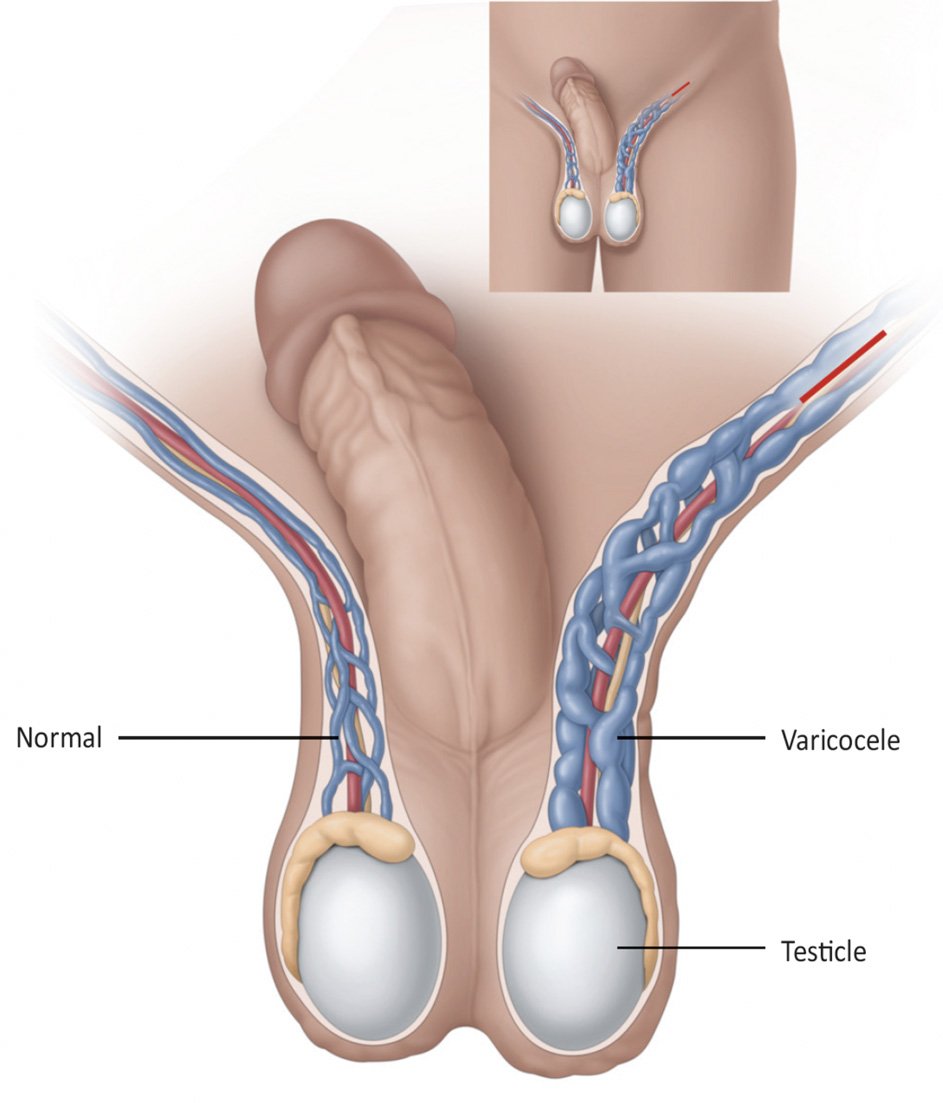Varicocele
What is a varicocele?
Figure 1. Illustration of varicocele (swollen and enlarged veins in the scrotum).
Varicocele describes a condition with swollen and enlarged veins in the scrotum (Figure 1) due to backward flow in the veins. Varicoceles are similar to varicose veins in the leg. Varicoceles are most common in prepubescent and adolescent boys. Varicoceles are more common on the left side because of the way blood drains from the left testicle.
What is the cause and how is it graded?
It is not known why varicoceles develop and no specific risk factors have been determined.
The severity of a varicocele can be classified into three grades:
Can be felt by hand only during straining
Can be felt by hand when relaxed
Can become clearly visible at a distance, even at complete rest.
How is a varicocele diagnosed?
Varicocele is usually diagnosed on a history and physical exam. The swollen veins may be visible and can feel like a “bag of worms” on examination. Diagnosis can be confirmed with an ultrasound scan of the scrotum. A right-side-only varicocele is uncommon and may require further investigation.
Can varicoceles cause infertility?
Varicoceles can affect fertility by reducing blood flow and raising the temperature of the testicles. This can cause the testicles to produce fewer and / or less healthy sperm. Early treatment can help produce healthier sperm and even regrowth of a testicle. However many men with varicoceles can father children without any treatment.
How is a varicocele treated?
Surgery is only advised if patients would benefit from surgery. Your urologist may recommend treatment if:
Pain, marked swelling, or physical discomfort is present
The affected testicle is small
Fertility is affected due to unhealthy sperm
Treatment options include:
Radiological embolisation - embolisation is performed through a small cut in the groin under sedation or local anaesthetic. It collapses the twisted vein with a special substance. It is is less invasive than surgery but it uses X-rays, so you are exposed to radiation.
Surgery – open or keyhole (laparoscopic) - Surgery is most often performed laparoscopically (keyhole surgery) or via an open cut in the groin. The procedure blocks the enlarged veins from draining blood from the testicle and redirects the blood flow to healthy veins.
What are the risks or complications of varicocele surgery?
The most common complication of treatments are recurrence (varicocele can come back), collection of fluid in the scrotum around the testicle (hydrocele), shrinking of the testicle or reduced function of the testicle
Pain from surgery is usually mild and you may be able to return to normal, non-strenuous activities after 2-3 days and to more strenuous activity after 2-4 weeks. It will take several months after surgery before improvements in sperm quality can be seen with a semen analysis. This is because it takes approximately 3 months for new sperm to develop.

